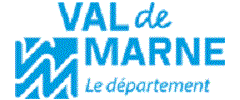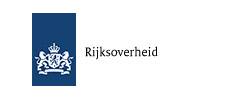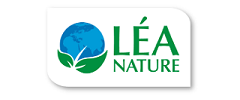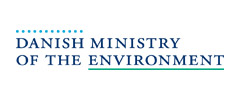Water and sanitation: still a luxury for millions of Europeans
WECF represents environmental NGOs in WHO mid-term review of European Environment and Health Process (EEHP)
14.04.2015 |

During the WHO European Environment and Health Process Mid-term Review (EHP-MTR) in April 2015, health and environment ministers from 53 countries will come together to evaluate progress and to identify the next steps towards meeting the goals of the Parma Declaration (2010) on Environment and Health. WECF/EcoForum will represent the environmental NGOs in this process.
The WHO gradually releases stories and publications on the topic, building up to the EHP-MTR meeting in Israel, on 28-30 April 2015. Below is the first article published in this regard.
Water and sanitation: still a luxury for millions of Europeans
Of the 900 million people in the WHO European Region, 9 out of 10 have access to improved drinking-water and sanitation facilities. While most Europeans take clean water for granted, 100 million people still do not have a household connection to drinking-water, and 67 million people have no access to improved sanitation and safe means to dispose of human faeces.
It is of particular concern that 6 million people in the Region still rely on surface water sources and 2 million people in 11 countries practise open defecation. As a consequence, 10 Europeans die every day from diarrhoea resulting from unsafe water and poor sanitation and hygiene. This critical situation is rarely reported.
The evidence is presented in a new WHO report, entitled "Water and sanitation in the WHO European Region: 2014 highlights", which summarizes from a regional perspective the 2014 data collated by the WHO/United Nations Children's Fund Joint Monitoring Programme for Water Supply and Sanitation. The report is released today in preparation for the WHO mid-term review of the European Environment and Health Process to be held in Haifa, Israel, on 28–30 April 2015.
Poor and rural populations most vulnerable
In the Caucasus and central Asia over 70% of the rural population live in homes without access to piped water on the premises, whereas only 14% of city residents are similarly disadvantaged.
This is the subregion in which progress has stalled; it has even experienced setbacks in achieving the Millennium Development Goal on access to safe drinking-water and basic sanitation. Nevertheless, it is also the subregion where action is most cost-effective: for every US dollar invested in sanitation in the Caucasus and central Asia it is estimated that five US dollars are saved in health costs and improved productivity.
Looking beyond access
"Figures on access tell only half the truth. To prevent and control waterborne disease effectively, interventions must look beyond access alone. Having a water tap or toilet in one's home does not guarantee clean and reliable water or safe disposal of human waste," says Oliver Schmoll, Programme Manager for Water and Sanitation at WHO/Europe. "We need to manage water and sanitation services safely, as the evidence tells us that this is how we can significantly reduce diarrhoeal disease."
The WHO-recommended water safety plan approach, a comprehensive risk assessment and risk management method, is the best method of ensuring the safety of a drinking-water supply. This approach also makes water and sanitation systems more resilient to heavy rainfall, flooding and drought.
Firm policy goals towards incremental improvement
The Protocol on Water and Health to the 1992 Convention on the Protection and Use of Transboundary Watercourses and International Lakes is the main policy instrument to improve health throughout the WHO European Region through more equitable access to safe water and sanitation services. Since the accession of Bosnia and Herzegovina and Serbia in 2010, the Protocol has 26 Parties, representing 60% of the European population.
Work on the Protocol for 2014–2016 prioritizes scale-up of safe management approaches and tackling the challenges related to water, sanitation and hygiene in schools, small-scale systems in rural areas and inequalities in access. In addressing these priorities, the Protocol serves as a regional hub for mutual assistance and cooperation, capacity building, networking and the exchange of best practices.
The WHO Regional Office for Europe serves as the joint secretariat to the Protocol together with the United Nations Economic Commission for Europe (UNECE).
Related News
Policy Dialogue On Sustainable Development, Health and Social justice in Tirana, Albania
Linking the Ostrava Declaration of the European Environment and Health Process to SDGs Agenda 2030
10.03.2018
UN Summit on Eradicating Poverty and Promoting Prosperity in a Changing World
8 days of advocacy and activism for a gender just future within the SDG process. WECF recently attended the UN summit on the Sustainable Development Goals (High Level Political Forum, HLPF) in New York and reports back on their experiences.
10.08.2017
Youth at the heart of ECO Forum's participation in Ostrava
Reporting back on WHO’s regional conference on environment and health, where WECF (and its ECO Forum delegation of 23 youths and seniors) was to advocate for a healthy future
23.06.2017
"Let's Ensure a Healthy Future" - WECF side event at WHO 6th Ministerial Conference
Protecting children from exposure to harmful chemicals to avoid irreversible damage.
14.06.2017
Midterm review of environment and health progress in the European Region
From 28 to 30 April WECF was part of the Ecoforum delegation, representing environmental organisations from the European Region, participating at the mid-term review meeting of the WHO European Environment and Health Process in Haifa, Israel
15.05.2015






































